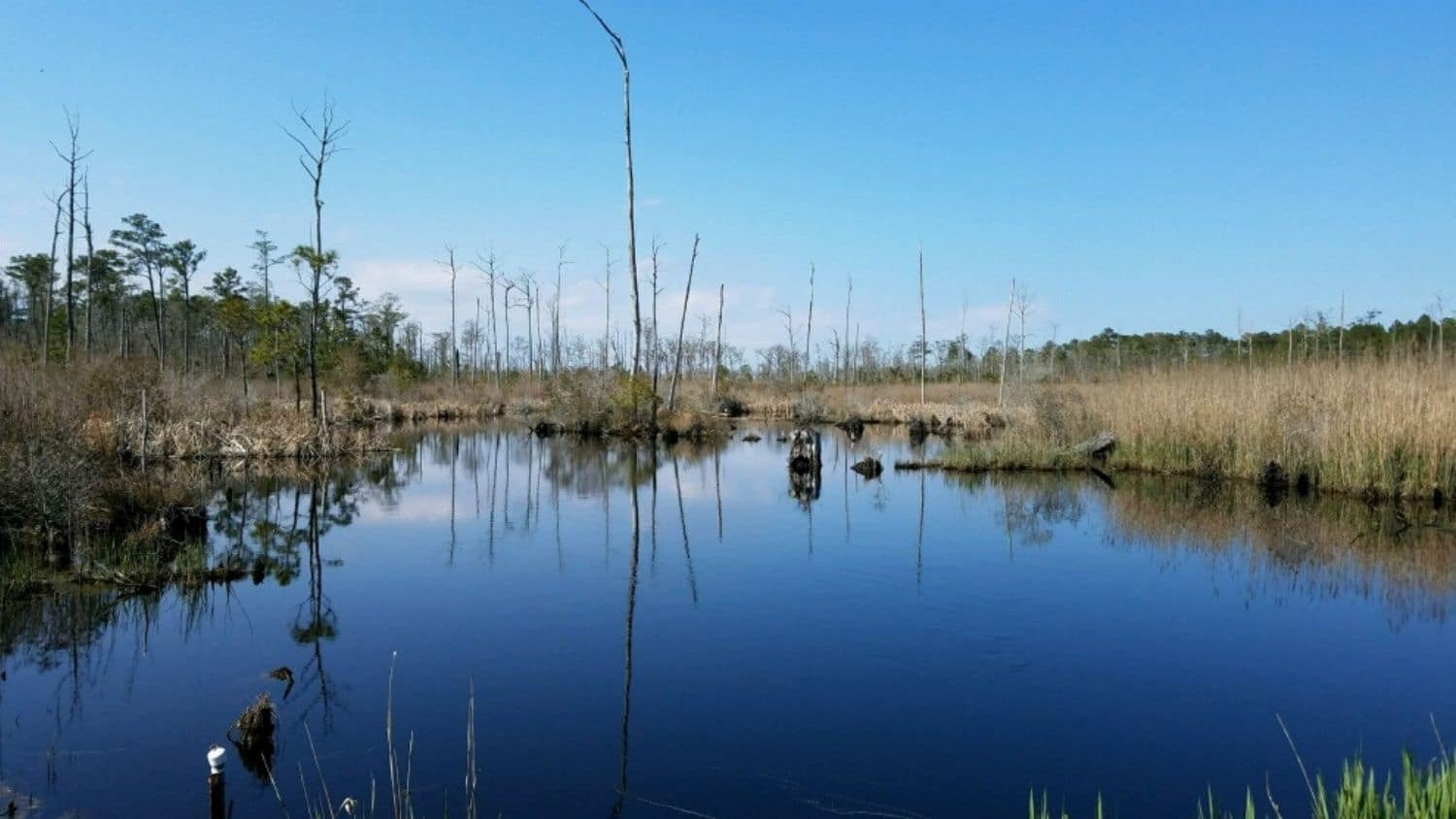Microbes Making Tree Methane ‘Farts’ in Ghost Forests Are in the Soils, Study Says
A new study from North Carolina State University shows that methane, a potent greenhouse gas, is largely generated in the soils below standing dead trees in so-called ghost forests, or coastal forests that are being killed off by rising sea levels.
 Ghost forest in North Carolina. Credit: Justine Neville, NC State.
Ghost forest in North Carolina. Credit: Justine Neville, NC State.
A new study from North Carolina State University shows that methane, a potent greenhouse gas, is largely generated in the soils below standing dead trees in so-called ghost forests, or coastal forests that are being killed off by rising sea levels.
This escaping methane gas, known colloquially as ghost forest tree “farts,” is actually generated by different tiny microorganisms. Researchers wanted to know if different communities of microbes are making methane gas inside the soils or in the dead trees, which are also known as snags. They found that although the methane gas is generated in the soils, the trees act like filtering straws as the gas rises through the wood. Microbes in the wood further chemically alter and consume the gas as it rises.
“We’re tracing where the methane is originally coming from, and what we’re finding is that it’s coming from the soils, and as it moves through the tree, it’s changing as well,” said Marcelo Ardón, associate professor of forestry and environmental resources at NC State. “The methane is being processed as it moves through those snags.”
As a visual sign of climate change, ghost forests are expected to become more common along the coast in the Southeast due to rising sea levels. In a previous study, Ardón and colleagues found that snags are important to calculating greenhouse gas emissions from ghost forests, and ignoring them could discount some of the emissions generated in a transitioning forest. In their new study, the researchers wanted to understand the methane’s source.
To answer that question, the researchers analyzed methane gas samples from standing dead trees in ghost forests across five sites on the Albemarle-Pamlico Peninsula on the North Carolina coast. They measured concentrations of the gas inside the trees, in the soils and in the water in the soil. They also tracked chemical signatures left by the microbes that produce and use methane gas. Methane is made of two elements – hydrogen and carbon – and each of these elements can have a different molecular weight from other atoms of the same type depending on the number of neutrons in their nuclei. Those variations in the elements are called isotopes, and since they’re not radioactive, they’re called stable isotopes. Researchers analyzed the amounts and types of stable isotopes of each element to help them track methane.
“The stable isotope signature is like a fingerprint you can follow,” said the study’s first author Melinda Martinez, a former graduate student at NC State, and now a postdoctoral scholar at the U.S. Geological Survey. “In our previous work, we saw that methane was coming out of the trees. Where is it coming from? Is it coming from the soil, produced by microbes, or within the tree itself as it decomposes?”
They found methane concentrations generally decreased the higher they got from the ground in the dead trees. They also saw evidence of a change in ratios between lighter and heavier isotopes in both carbon and hydrogen from the water in the ground to the soils to the snags.
Lastly, they took samples from the trees and placed them in vials to see if they were producing any methane when isolated in an oxygen-free environment, or if any methane was used in an oxygen-rich vial. They found very little methane was produced or consumed in the vials.
“Only five out of 100 vial samples produced any significant results, which provides further evidence that the methane being emitted from standing dead trees originated in the soil,” Martinez said.
The findings just address one greenhouse gas, but researchers say it’s important because understanding methane fluxes are significant for understanding the environmental impact of the forest-to-ghost forest transition. Methane has a higher warming potential than carbon dioxide, researchers said.
“It’s important to be able to understand how methane is moving through the ecosystem,” Martinez said. “These ghost forest regions are temporary ecosystems; they will become marshes. But even during the transient state, we want to know how ghost forests produce and move this greenhouse gas.”
Publication: Melinda Martinez, et al., Identifying Sources and Oxidation of Methane in Standing Dead Trees in Freshwater Forested Wetlands, Frontiers in Environmental Science (2022). DOI: 10.3389/fenvs.2021.737379.
Original Story Source: North Carolina State University

 Alerts Sign-up
Alerts Sign-up